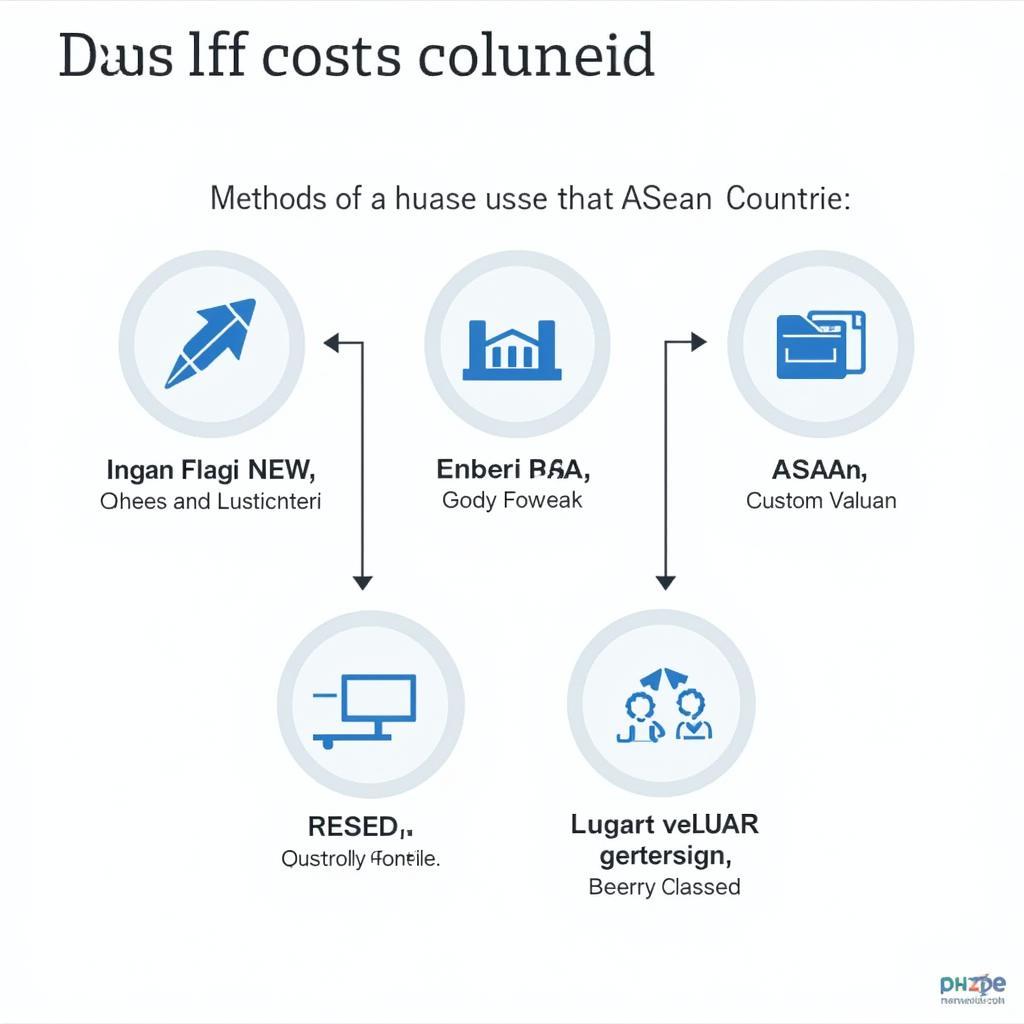ASEAN import regulations are crucial for businesses looking to tap into the booming Southeast Asian market. With a combined GDP of over US$3 trillion and a population exceeding 650 million, ASEAN presents immense opportunities for international trade. However, navigating the diverse import landscape across its 10 member states can be complex. This comprehensive guide delves into the intricacies of ASEAN import regulations, providing you with the knowledge to streamline your import processes and succeed in this dynamic region.
Understanding ASEAN Import Regulations: A Unified Market?
While ASEAN strives for economic integration, it’s important to note that a single, unified market doesn’t exist. Each member state maintains its own import regulations, tariffs, and standards. This means businesses must familiarize themselves with the specific requirements of each country they wish to import goods into.
Key Aspects of ASEAN Import Regulations
1. ASEAN Trade Repository (ATR): Your Gateway to Information
The ATR serves as a centralized online platform providing comprehensive information on import and export procedures, as well as tariffs and trade regulations within ASEAN. Utilizing the ATR can significantly reduce time and costs associated with navigating bureaucratic processes.
2. HS Codes: The Language of Trade
The Harmonized System (HS) is an internationally standardized system of names and numbers used to classify traded products. ASEAN countries utilize HS codes to determine tariffs and apply specific import regulations. Ensuring accurate HS code classification is essential for smooth customs clearance.
3. Import Licenses and Permits:
Certain goods imported into ASEAN countries may require specific licenses or permits. These requirements vary depending on the nature of the product and the importing country. Consulting the ATR or relevant government websites is crucial to determine if your goods necessitate such documentation.
4. Customs Valuation and Duties:
ASEAN countries use various methods to determine the customs value of imported goods, which forms the basis for calculating import duties. Understanding these methods and potential implications on your import costs is essential.
 Customs Valuation in ASEAN
Customs Valuation in ASEAN
5. ASEAN Free Trade Agreements (FTAs): Leveraging Preferential Treatment:
ASEAN has established FTAs with major economies like China, Japan, and Australia. These agreements offer preferential tariff rates for goods traded between signatory countries, potentially leading to significant cost savings for importers.
6. Standards and Conformity Assessment:
ASEAN countries maintain specific standards for product safety, quality, and labeling. Importers must ensure their goods comply with these requirements to avoid delays or rejections at customs.
7. Intellectual Property Rights (IPR) Protection:
Protecting your intellectual property is crucial when importing goods into ASEAN. Familiarize yourself with each country’s IPR laws and enforcement mechanisms to safeguard your brand and products from infringement.
Tips for Smooth Import Processes in ASEAN
1. Engage a Customs Broker:
Navigating complex import regulations can be challenging. Employing a reputable customs broker with local expertise can streamline processes, ensure compliance, and minimize potential delays.
2. Maintain Accurate Documentation:
Precise and complete documentation is paramount in international trade. Ensure all necessary paperwork, including invoices, packing lists, and certificates of origin, are accurate and comply with the importing country’s requirements.
3. Stay Informed About Regulatory Changes:
ASEAN import regulations are subject to change. Staying updated on any amendments or new legislation is crucial for maintaining compliance and avoiding disruptions to your supply chain.
Conclusion: Unlocking Opportunities in the ASEAN Market
Understanding and adhering to ASEAN import regulations is essential for businesses aiming to capitalize on the region’s vast potential. By leveraging resources like the ATR, engaging local expertise, and staying informed about regulatory changes, you can navigate the import landscape successfully and unlock lucrative opportunities in this dynamic and rapidly growing market.
FAQ:
1. What is the average import tariff rate in ASEAN?
Import tariff rates vary significantly depending on the product and the specific ASEAN country. However, ASEAN’s Common Effective Preferential Tariff (CEPT) scheme has significantly reduced tariffs on most goods traded within the region.
2. How do I find a reliable customs broker in ASEAN?
Reputable international freight forwarders often have a network of trusted customs brokers in ASEAN countries. You can also consult industry associations or online directories for recommendations.
3. What are the penalties for non-compliance with ASEAN import regulations?
Penalties can range from fines and shipment delays to seizure of goods and legal action, depending on the severity of the violation.
4. Can I import food products into ASEAN countries?
Yes, but strict regulations regarding food safety, labeling, and packaging apply. Consulting the relevant authorities in the importing country is essential to ensure compliance.
5. What is the role of the ASEAN Single Window (ASW) in import processes?
The ASW aims to expedite cargo clearance by enabling traders to submit electronic trade documents to a single entry point, streamlining cross-border trade within ASEAN.
Contact Us:
For any assistance regarding ASEAN import regulations and related services, please contact us at:
Phone Number: 0369020373
Email: [email protected]
Address: Thon Ngoc Lien, Hiep Hoa, Bac Giang, Vietnam
Our dedicated customer support team is available 24/7 to assist you.
